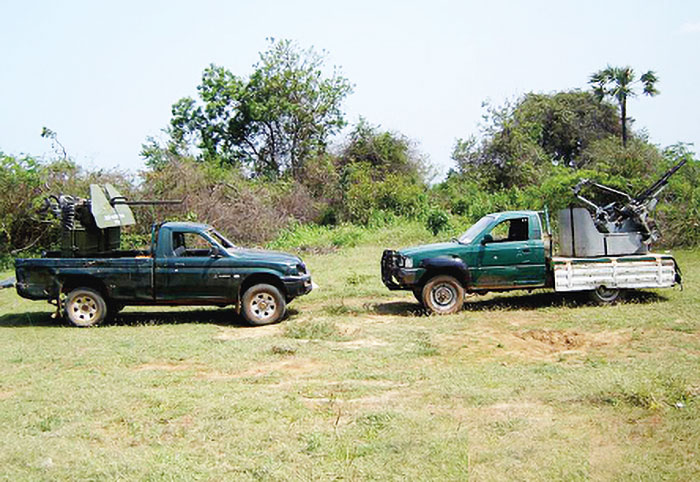Midweek Review
Vanni war and Israel-Gaza conflict: Funding catastrophes
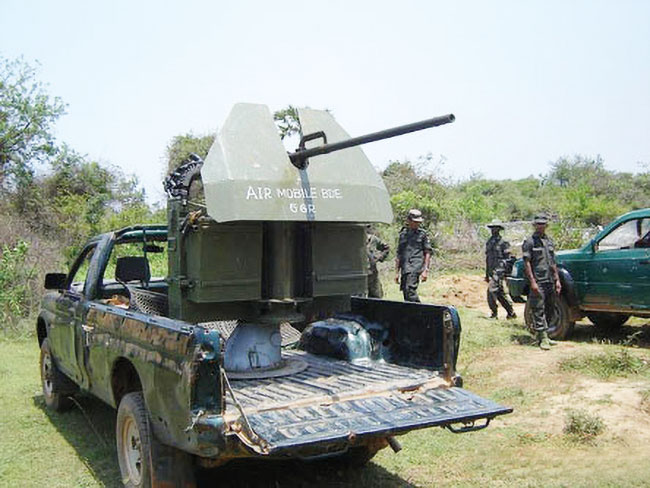
The utterly duped Sri Lanka government had no qualms in bending backwards to appease the LTTE in so many ways believing the so-called peace facilitators to the bitter end, despite the LTTE violating virtually all CFA rules.
Viking peace facilitators took the Lankan leaders on right royal ride by making them believe in the Tigers to the bitter end. A case in point is the payments made by the then government in respect of an undisclosed number of brand new four-wheel drive double cabs acquired by the LTTE from Toyota Lanka (Pvt.) Ltd. According to a letter sent by S. Pulieedevan of the LTTE Peace Secretariat, dated
January 26, 2004, to Bradman Weerakoon, the Secretary to Premier Ranil Wickremesinghe, the government had paid Customs duty, surcharge, excise Duty, PAL, VAT and BTT for those double cabs. The LTTE only paid the CIF value of the vehicles. During the Vanni battles, the Army captured double cabs mounted with anti-aircraft guns. These double cabs could have been among the vehicles acquired from Toyota Lanka. What really baffled the public is that the LTTE received such special status even 10 months after it quit the negotiating table.
By Shamindra Ferdinando
The creation of Hamas now fighting Israel can be easily compared with the formation of the Liberation Tigers of Tamil Eelam (LTTE) and other Tamil groups in the late 70s. Hamas is an Arabic acronym for Islamic Resistance Movement.
Hamas and the LTTE were meant to undermine the elected representatives of the Palestinians, and the Tamil speaking community, respectively. That was one of the primary objectives of those who initially sponsored Hamas and the LTTE and other Tamil groups which gave up separatist agenda during Ranasinghe Premadasa’s tenure as the President (Jan. 02, 1989, to May Day, 1993).
Later objectives of the sponsors and strategies of Hamas and the LTTE changed over the years as they rapidly expanded, drawing funding from many other sources. Both groups achieved conventional status, and the losses they inflicted on governments were an indication of their military prowess. When Israel, the founding benefactor of Hamas, stopped funding it, regional powers, opposed to the Jewish State, stepped in, in a big way.
The LTTE went to the extent of killing Rajiv Gandhi who, in his capacity as the Indian Premier, forced Sri Lanka to accept the deployment of the Indian Army here (July 1987-March 1990) to impose a solution that suited New Delhi’s overall strategy at that time. Gandhi was killed in May 1991 by an LTTE suicide bomber during an election rally in Tamil Nadu. During the IPKF deployment here the LTTE humiliated India by killing over 1,300 officers and men whereas Hamas stunned Israel with an unprecedented Oct. 07 attack after a spate of large scale attacks/confrontations over the years. Israel fought three wars with Hamas in 2009, 2012 and 2014 and the current conflict is so far the worst.
Last week The Island dealt with some of the issues at hand in an article titled Vanni war and Israel-Gaza conflict: similarities and differences. The writer felt the need to discuss the Indian financial package that helped turn a Sri Lankan armed group into one of the world’s most sophisticated fighting machines. But soon after India halted funding terrorism here, the LTTE expanded its vast network of revenue sources here and overseas. One of its new-found sponsors happened to be the government of Sri Lanka.
Before we further discuss the LTTE funding/revenue sources, it would be pertinent to mention how Israel facilitated the growth of Hamas to undermine the Palestinian Liberation Organization (PLO) and faction, Fatah.
Brig. Gen. Yitzhak Segev, who had been the Israeli military governor in Gaza in the early 1980s, is on record as having told the New York Times that he had helped finance the Palestinian Islamist movement as a counterweight to the PLO and Fatah.
New York Times quoted the retired Brig. General as having disclosed how the military government funded Hamas through mosques. Number of others had commented on the Israeli funding for Hamas. Perhaps one of the most significant statements pertaining to the Jewish state’s affiliation with Hamas was made by Avner Cohen, one-time Israeli religious affairs official who served the Gaza administration for over two decades. Wall Street Journal in 2009 quoted Cohen as having declared: “Hamas, to my great regret, is Israel’s creation.” That was the year Israel fought its first war with Hamas. Cohen has revealed the warning he issued to the Israeli government in the mid-80s over its divide-and-rule strategy in the occupied region. The Wall Street Journal quoted the Israeli as having said: “I … suggest focusing our efforts on finding ways to break up this monster before this reality jumps in our face.”
The US, the UK, France or EU didn’t find fault with Hamas at the time Israel promoted Hamas at the expense of the PLO and Fatah. Israel is paying a very heavy price for what can be called a strategic miscalculation in their policy.
Jayantha Dhanapala on states sponsoring terrorism
Over a year after the successful conclusion of the war against the LTTE, the late Jayantha Dhanapala, one-time UN Under-Secretary-General for the Office for Disarmament Affairs from 1998-2003, appeared before the Lessons Learnt and Reconciliation Commission. Dhanapala, the career diplomat, who has had diplomatic postings in London, Beijing, Washington DC, New Delhi and Geneva and also performed ambassadorial duties in Geneva accredited to the UN from 1984-1987 and in Washington DC from 1995-1997 addressed the entire gamut of issues on Aug. 25, 2010.
Dhanapala dealt with the contentious issue of governments sponsoring terrorism with the focus on the Indian funding of the LTTE. Perhaps, Dhanapala may not have taken President Ranasinghe Premadasa’s funding and arming of the LTTE into consideration. Let me reproduce what the erudite former diplomat Dhanapala who served as the head of the Norwegian-funded Secretariat for Coordinating Peace Process (SCOPP 2004-2005) declared before the LLRC: “Now I think it is important for us to expand that concept to bring in the culpability of those members of the international community who have subscribed to the situation that has caused injury to the civilians of a nation. I talk about the way in which terrorist groups are given sanctuary; are harboured; are supplied with arms and training by some countries with regard to their neighbours or with regard to other countries. We know that in our case this happened, and I don’t want to name countries, but even countries who have allowed their financial procedures and systems to be abused in such a way that money can flow from their countries in order to buy the arms and ammunitions that cause the deaths, the maiming and the destruction of property in Sri Lanka are to blame and there is therefore a responsibility to protect our civilians and the civilians of other nation States from that kind of behaviour on the part of members of the international community, and I think this is something that will echo with many countries in the Non-Aligned Movement where Sri Lanka has a very respected position and where I hope we will be able to raise this issue.”
The writer covered the LLRC proceedings for The Island throughout the sittings held at the Lakshman Kadirgamar Institute (LKI) named after the much-respected Foreign Minister slain by the LTTE. Actually, Dharnapala’s statement, regardless of its importance, never received the government attention it deserved. In fact, the government simply ignored it. The then Rajapaksa government was more preoccupied in playing politics with the accountability issue than addressing the concerns of the Tamil speaking people and the Western powers who had to woo the vociferous Tamil Diaspora for their local vote bank.
Dhanapala not only dealt with India but underscored the responsibility of Western powers who allowed the LTTE to raise funds in their countries to wage war here. The sinking of nearly a dozen floating LTTE arsenals over the years in Indian waters, Sri Lankan waters, and on the high seas, revealed the extent of the funding available to the LTTE. The LTTE had a range of weapons, including heavy artillery, shoulder fired anti-aircraft missiles, anti-tank missiles, underwater equipment and fast boats. Acquisition of such an arsenal couldn’t have been done without unlimited funds. The group had so much funds it hired foreigners and went to the extent of making an attempt to bribe a US State Department official.
Nearly 15 years after the war, only India knows how much the Gandhi governments spent on establishing a massive terrorist project in Sri Lanka. In fact, the LTTE demanded compensation from India to cover up losses the group suffered in the wake of the 1987 Indo-Lanka peace accord. The LTTE wanted compensation for the denial of its right to tax people living in areas under its control and those who entered that region.
It would be pertinent to mention that India spent not only on the LTTE but also on nearly half a dozen Tamil groups, including the Eelam People’s Revolutionary Liberation Front (EPRLF) and the Tamil National Army (TNA) that was formed in the wake of India’s decision to withdraw its troops from the then temporarily merged Northern and Eastern Provinces after the Premadasa government asked them to leave unceremoniously.
How Sri Lanka funded LTTE
During the war, the then Opposition MP Bandula Gunawardena, in his own hand writing, released a statement that dealt with payments made to the LTTE at the behest of President Ranasinghe Premadasa. Lawmaker Gunawardena who now served the Wickremesinghe-Rajapaksa Cabinet, disclosed that the Treasury made the largest single payment months after the eruption of Eelam War II in the second week of June 1990. According to the document issued by MP Gunawardena, the first payment had been made on August 09, 1989, a couple of months after the LTTE initiated talks with Premadasa while the Indian Army was deployed here. Altogether, there had been 15 payments of Rs 5 mn each on 15 separate occasions, with the largest and the final payment of Rs 50 mn paid on Nov. 05, 1990.
At the time of these payments, R. Paskaralingam had been the Secretary to the Treasury and he couldn’t have resisted the orders issued by the President. Premadasa also had no hesitation in issuing a large stock of T-56 assault rifles and ammunition to the LTTE. His administration also issued weapons to other Tamil groups. Perhaps, Sri Lanka should officially acknowledge the type and the amount of weapons issued to Tamil groups and the funds paid to them.
Let me remind the reader that the last and the largest payment was made many months after the LTTE executed several hundred surrendered policemen in the East after they were ordered to do so by the then government and overran isolated Army detachments along the Kandy-Jaffna road, north of Omanthai. As a result, the Army lost the overland Main Supply Route (MSR) route to Jaffna. The MSR was restored in January 2009, nearly 19 years after the military suffered defeat in the Vanni.
During the conflict, successive governments accepted the LTTE’s right to tax people living in areas they controlled. Those entering the region under its control, too, were taxed.
But following the signing of a one-sided Ceasefire Agreement (CFA) with the LTTE in Feb. 2002. arranged by the Norwegian facilitators ,unknown to many, including then Commander in Chief President Chandrika Bandaranaike Kumaratunga, the then government did away with all restrictions. Overnight, the government accepted a region under exclusive control of the LTTE where the group denied the right of other Tamil political parties to engage in political activity. The LTTE was granted special status. The government paved the way for the LTTE to receive substantial foreign funding and also bring in a range of equipment through the Bandaranaike International Airport (BIA) without checks.
Funding for LTTE radio
Only Hamas really knows what it did with funds received from Israel. Similarly, only the LTTE knows what it really did with funds received from Sri Lanka during the conflict. Let me examine one incident during the 2002-2003 period that involved Sri Lanka, Norway and the LTTE on the basis of disclosure made by Bradman Weerakoon, the then Secretary to Premier Ranil Wickremesinghe, regarding the agreement on an LTTE proposal to install and operate an FM station in Kilinochchi.
Weerakoon, in an article titled ‘Initiating and Sustaining the Peace Process: Origins and Challenges’ included in ‘Negotiating Peace in Sri Lanka: Efforts, Failures and Lessons’ discussed the circumstances under which the equipment had been brought into the country, with the support of the Norwegians. Weerakoon described the agreement on the FM station as a confidence building measure.
The upgrading of the LTTE propaganda arm took place following the closure of Vanni Sevaya and restrictions on the Army with regard to dissemination of security related news. (Vanni Sevawa catered especially for the armed forces, police and Sinhala civilians living in the area)
Having described the installation of the new equipment as a confidence building measure, Weerakoon inadvertently exposed the despicable LTTE strategy. Had it been a genuinely confidence building measure, the LTTE would have discussed their move to establish an FM station before ordering the equipment.
Weerakoon discussed in considerable detail how the LTTE had conducted the transaction with the help of the Norwegians. Weerakoon said: “The Political headquarters of the LTTE in a letter to the PM’s Office on Oct. 1, 2002, informed the government that it had purchased a new FM transmitter, which they would like to bring to Vanni to be used in their dissemination campaign about the peace process. The equipment had already been purchased by them in Singapore at a cost of USD 93,265 and was on the way by sea. The letter requested customs clearance and duty free importation and no delay.”
Weerakoon also revealed how the Norwegians utilized their diplomatic status to clear the LTTE cargo duty free by substituting itself as the consignee of the goods. But once the Norwegians handed over the goods to the LTTE through SCOPP (Secretariat for Coordinating the Peace Process), the SCOPP became liable for duty amounting to Rs. 3 mn, which according to Weerakoon, was paid with funds made available by Norway to the SCOPP. Weerakoon estimated the annual donations received by SCOPP from Norway at Rs. 12 mn.
Weerakoon admitted that the LTTE had informed the government of its move, while the cargo was on its way to Colombo and the Norwegians stepped in at the right moment to have the equipment delivered to the LTTE.
A treacherous government ordered the Army to transport the equipment from Colombo port to Omanthai and hand them over to the LTTE, while their Vanni Sevaya remained closed.
While Weerakoon referred to Norwegian funds being utilised to pay for import duty, the then Director General of SCOPP, Dr. John Gooneratne claimed using funds received from Sweden. The revelation is made in a letter Gooneratne wrote to Treasury Chief, Charitha Ratwatte. The letter dated Jan. 16, 2004, referred to the role played by the Prime Minister’s Office in carrying out the controversial transaction.
Wouldn’t it be interesting to know, at least now, who actually paid duty for the LTTE equipment?
Funding through government
Sri Lanka obviously believed the LTTE wouldn’t accept a political solution and the group couldn’t be defeated on the battlefield. Therefore, the group granted the opportunity to tax the people in the North and East, whereas Western powers turned a blind eye to massive fund raising projects undertaken by the LTTE in Europe, the US and Canada as well as other countries. How much did the LTTE spend on acquiring and operating a fleet of large ships to store arms, ammunition and equipment in the high seas and transfer weapons as and when required?
The LTTE brazenly used the CFA to secure funds even from the international community. The then government fully cooperated with the LTTE strategy.
Former respected MP Rajiva Wijesinha, during his tenure as Secretary General of SCOPP, and during the initial phase of the Vanni offensive that was launched in March 2007, made a shocking revelation regarding funds received by the LTTE. In response to Prof. Jayadeva Uyangoda’s criticism of the SCOPP, Prof. Wijesinha issued a statement titled ‘Sri Lanka’s civil society organizations: Shady techniques and bribes to the Tigers?’
Wijesinha dealt with hitherto unknown funding operations arranged by the UNP government in support of the peace process facilitated by the CFA. One of the grants-UNDP project worth USD 600,000 signed by Bradman Weerakoon who was also the Commissioner General for the Coordination of Relief, Rehabilitation and Reconciliation as well as the External Resources Department raised eyebrows.
Wijesinha expressed surprise at the signing of the agreement on Dec 19, 2003 amidst deepening political turmoil caused by President Chandrika Bandaranaike Kumaratunga suspending Parliament. She also sacked three ministers and brought the Army on to the streets of Colombo. However, what Prof. Wijesinha didn’t say that by then the LTTE had quit the negotiating table. Why did the government authorize such a huge amount of UNDP funds for the so-called LTTE Peace Secretariat nine months after the LTTE suspended its participation in the Norwegian arranged talks? Prof. Wijesinha pointed out that the UNDP funding was made available to the LTTE just months ahead of the general election. Did the UNDP realize what it was doing?
The LTTE-backed Tamil National Alliance (TNA) recorded its best performance at the general election held in early April, 2004. The Parliament conveniently forgot what the EU polls observation mission said about the LTTE helping the TNA to secure over 20 seats in the Northern and Eastern Provinces by stuffing ballot boxes. This was against the backdrop of the devastating split in the LTTE caused by Vinayagamoorthy Muralitharan alias Karuna Amman, one-time commander of LTTE formations which thwarted Operation Jayasikurui in the Vanni theatre in 1997/1998 period.
The writer intended to discuss the funding made available by various interested parties, including governments to those who promoted the peace process involving the LTTE over a period of time.
The Hamas attack on Israel should influence Sri Lanka to examine various aspects of the conflict that was brought to an end through military means-an effort so far unmatched by any country since the end of World War II.
Features
Handunnetti and Colonial Shackles of English in Sri Lanka
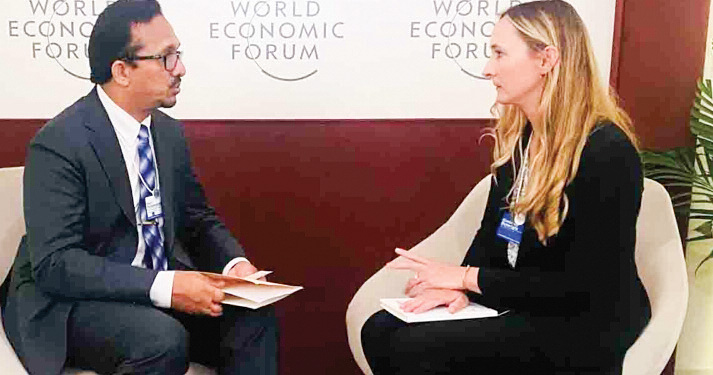
“My tongue in English chains.
I return, after a generation, to you.
I am at the end
of my Dravidic tether
hunger for you unassuaged
I falter, stumble.”
– Indian poet R. Parthasarathy
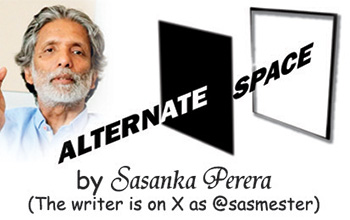 When Minister Sunil Handunnetti addressed the World Economic Forum’s ‘Is Asia’s Century at Risk?’ discussion as part of the Annual Meeting of the New Champions 2025 in June 2025, I listened carefully both to him and the questions that were posed to him by the moderator. The subsequent trolling and extremely negative reactions to his use of English were so distasteful that I opted not to comment on it at the time. The noise that followed also meant that a meaningful conversation based on that event on the utility of learning a powerful global language and how our politics on the global stage might be carried out more successfully in that language was lost on our people and pundits, barring a few commentaries.
When Minister Sunil Handunnetti addressed the World Economic Forum’s ‘Is Asia’s Century at Risk?’ discussion as part of the Annual Meeting of the New Champions 2025 in June 2025, I listened carefully both to him and the questions that were posed to him by the moderator. The subsequent trolling and extremely negative reactions to his use of English were so distasteful that I opted not to comment on it at the time. The noise that followed also meant that a meaningful conversation based on that event on the utility of learning a powerful global language and how our politics on the global stage might be carried out more successfully in that language was lost on our people and pundits, barring a few commentaries.
Now Handunnetti has reopened the conversation, this time in Sri Lanka’s parliament in November 2025, on the utility of mastering English particularly for young entrepreneurs. In his intervention, he also makes a plea not to mock his struggle at learning English given that he comes from a background which lacked the privilege to master the language in his youth. His clear intervention makes much sense.
The same ilk that ridiculed him when he spoke at WEF is laughing at him yet again on his pronunciation, incomplete sentences, claiming that he is bringing shame to the country and so on and so forth. As usual, such loud, politically motivated and retrograde critics miss the larger picture. Many of these people are also among those who cannot hold a conversation in any of the globally accepted versions of English. Moreover, their conceit about the so-called ‘correct’ use of English seems to suggest the existence of an ideal English type when it comes to pronunciation and basic articulation. I thought of writing this commentary now in a situation when the minister himself is asking for help ‘in finding a solution’ in his parliamentary speech even though his government is not known to be amenable to critical reflection from anyone who is not a party member.
The remarks at the WEF and in Sri Lanka’s parliament are very different at a fundamental level, although both are worthy of consideration – within the realm of rationality, not in the depths of vulgar emotion and political mudslinging.
The problem with Handunnetti’s remarks at WEF was not his accent or pronunciation. After all, whatever he said could be clearly understood if listened to carefully. In that sense, his use of English fulfilled one of the most fundamental roles of language – that of communication. Its lack of finesse, as a result of the speaker being someone who does not use the language professionally or personally on a regular basis, is only natural and cannot be held against him. This said, there are many issues that his remarks flagged that were mostly drowned out by the noise of his critics.
Given that Handunnetti’s communication was clear, it also showed much that was not meant to be exposed. He simply did not respond to the questions that were posed to him. More bluntly, a Sinhala speaker can describe the intervention as yanne koheda, malle pol , which literally means, when asked ‘Where are you going?’, the answer is ‘There are coconuts in the bag’.
He spoke from a prepared text which his staff must have put together for him. However, it was far off the mark from the questions that were being directly posed to him. The issue here is that his staff appears to have not had any coordination with the forum organisers to ascertain and decide on the nature of questions that would be posed to the Minister for which answers could have been provided based on both global conditions, local situations and government policy. After all, this is a senior minister of an independent country and he has the right to know and control, when possible, what he is dealing with in an international forum.
This manner of working is fairly routine in such international fora. On the one hand, it is extremely unfortunate that his staff did not do the required homework and obviously the minister himself did not follow up, demonstrating negligence, a want for common sense, preparedness and experience among all concerned. On the other hand, the government needs to have a policy on who it sends to such events. For instance, should a minister attend a certain event, or should the government be represented by an official or consultant who can speak not only fluently, but also with authority on the subject matter. That is, such speakers need to be very familiar with the global issues concerned and not mere political rhetoric aimed at local audiences.
Other than Handunnetti, I have seen, heard and also heard of how poorly our politicians, political appointees and even officials perform at international meetings (some of which are closed door) bringing ridicule and disastrous consequences to the country. None of them are, however, held responsible.
Such reflective considerations are simple yet essential and pragmatic policy matters on how the government should work in these conditions. If this had been undertaken, the WEF event might have been better handled with better global press for the government. Nevertheless, this was not only a matter of English. For one thing, Handunnetti and his staff could have requested for the availability of simultaneous translation from Sinhala to English for which pre-knowledge of questions would have been useful. This is all too common too. At the UN General Assembly in September, President Dissanayake spoke in Sinhala and made a decent presentation.
The pertinent question is this; had Handunetti had the option of talking in Sinhala, would the interaction have been any better? That is extremely doubtful, barring the fluency of language use. This is because Handunnetti, like most other politicians past and present, are good at rhetoric but not convincing where substance is concerned, particularly when it comes to global issues. It is for this reason that such leaders need competent staff and consultants, and not mere party loyalists and yes men, which is an unfortunate situation that has engulfed the whole government.
What about the speech in parliament? Again, as in the WEF event, his presentation was crystal clear and, in this instance, contextually sensible. But he did not have to make that speech in English at all when decent simultaneous translation services were available. In so far as content was concerned, he made a sound argument considering local conditions which he knows well. The minister’s argument is about the need to ensure that young entrepreneurs be taught English so that they can deal with the world and bring investments into the country, among other things. This should actually be the norm, not only for young entrepreneurs, but for all who are interested in widening their employment and investment opportunities beyond this country and in accessing knowledge for which Sinhala and Tamil alone do not suffice.
As far as I am concerned, Handunetti’s argument is important because in parliament, it can be construed as a policy prerogative. Significantly, he asked the Minister of Education to make this possible in the educational reforms that the government is contemplating.
He went further, appealing to his detractors not to mock his struggle in learning English, and instead to become part of the solution. However, in my opinion, there is no need for the Minister to carry this chip on his shoulder. Why should the minister concern himself with being mocked for poor use of English? But there is a gap that his plea should have also addressed. What prevented him from mastering English in his youth goes far deeper than the lack of a privileged upbringing.
The fact of the matter is, the facilities that were available in schools and universities to learn English were not taken seriously and were often looked down upon as kaduwa by the political spectrum he represents and nationalist elements for whom the utilitarian value of English was not self-evident. I say this with responsibility because this was a considerable part of the reality in my time as an undergraduate and also throughout the time I taught in Sri Lanka.
Much earlier in my youth, swayed by the rhetoric of Sinhala language nationalism, my own mastery of English was also delayed even though my background is vastly different from the minister. I too was mocked, when two important schools in Kandy – Trinity College and St. Anthony’s College – refused to accept me to Grade 1 as my English was wanting. This was nearly 20 years after independence. I, however, opted to move on from the blatant discrimination, and mastered the language, although I probably had better opportunities and saw the world through a vastly different lens than the minister. If the minister’s commitment was also based on these social and political realities and the role people like him had played in negating our English language training particularly in universities, his plea would have sounded far more genuine.
If both these remarks and the contexts in which they were made say something about the way we can use English in our country, it is this: On one hand, the government needs to make sure it has a pragmatic policy in place when it sends representatives to international events which takes into account both a person’s language skills and his breadth of knowledge of the subject matter. On the other hand, it needs to find a way to ensure that English is taught to everyone successfully from kindergarten to university as a tool for inclusion, knowledge and communication and not a weapon of exclusion as is often the case.
This can only bear fruit if the failures, lapses and strengths of the country’s English language teaching efforts are taken into cognizance. Lamentably, division and discrimination are still the main emotional considerations on which English is being popularly used as the trolls of the minister’s English usage have shown. It is indeed regrettable that their small-mindedness prevents them from realizing that the Brits have long lost their long undisputed ownership over the English language along with the Empire itself. It is no longer in the hands of the colonial masters. So why allow it to be wielded by a privileged few mired in misplaced notions of elitism?
Features
Finally, Mahinda Yapa sets the record straight
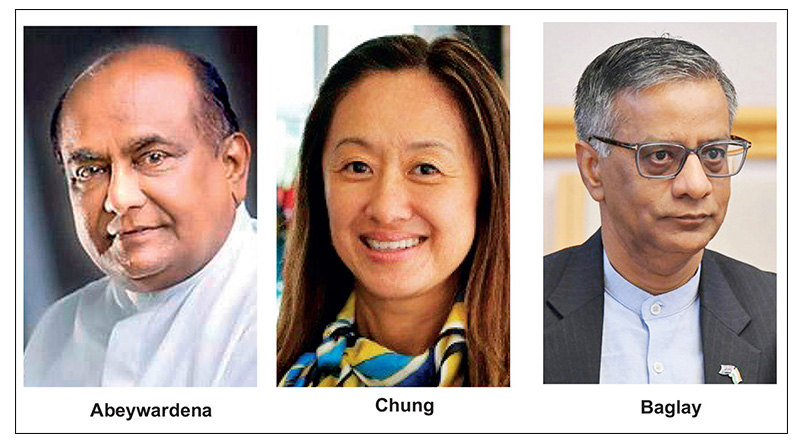
Clandestine visit to Speaker’s residence:
Finally, former Speaker Mahinda Yapa Abeywardena has set the record straight with regard to a controversial but never properly investigated bid to swear in him as interim President. Abeywardena has disclosed the circumstances leading to the proposal made by external powers on the morning of 13 July, 2022, amidst a large scale staged protest outside the Speaker’s official residence, situated close to Parliament.
Lastly, the former parliamentarian has revealed that it was then Indian High Commissioner, in Colombo, Gopal Baglay (May 2022 to December 2023) who asked him to accept the presidency immediately. Professor Sunanda Maddumabandara, who served as Senior Advisor (media) to President Ranil Wickremesinghe (July 2022 to September 2024), disclosed Baglay’s direct intervention in his latest work, titled ‘Aragalaye Balaya’ (Power of Aragalaya).
Prof. Maddumabandara quoted Abeywardena as having received a startling assurance that if he agreed to accept the country’s leadership, the situation would be brought under control, within 45 minutes. Baglay had assured Abeywardena that there is absolutely no harm in him succeeding President Gotabaya Rajapaksa, in view of the developing situation.
The author told the writer that only a person who had direct control over the violent protest campaign could have given such an assurance at a time when the whole country was in a flux.
One-time Vice Chancellor of the Kelaniya University, Prof. Maddumabandara, launched ‘Aragalaye Balaya’ at the Sri Lanka Foundation on 20 November. In spite of an invitation extended to former President Gotabaya Rajapaksa, the ousted leader hadn’t attended the event, though UNP leader Ranil Wickremesinghe was there. Maybe Gotabaya felt the futility of trying to expose the truth against evil forces ranged against them, who still continue to control the despicable agenda.
Obviously, the author has received the blessings of Abeywardena and Wickremesinghe to disclose a key aspect in the overall project that exploited the growing resentment of the people to engineer change of Sri Lankan leadership.
The declaration of Baglay’s intervention has contradicted claims by National Freedom Front (NFF) leader Wimal Weerawansa (Nine: The hidden story) and award-winning writer Sena Thoradeniya (Galle Face Protest: System change for anarchy) alleged that US Ambassador Julie Chung made that scandalous proposal to Speaker Abeywardena. Weerawansa and Thoradeniya launched their books on 25 April and 05 July, 2023, at the Sri Lanka Foundation and the National Library and Documentation Services Board, Independence Square, respectively. Both slipped in accusing Ambassador Chung of making an abortive bid to replace Gotabaya Rajapaksa with Mahinda Yapa Abeywardena.
Ambassador Chung categorically denied Weerawansa’s allegation soon after the launch of ‘Nine: The hidden story’ but stopped short of indicating that the proposal was made by someone else. Chung had no option but to keep quiet as she couldn’t, in response to Weerawansa’s claim, have disclosed Baglay’s intervention, under any circumstances, as India was then a full collaborator with Western designs here for its share of spoils. Weerawansa, Thoradeniya and Maddumabandara agree that Aragalaya had been a joint US-Indian project and it couldn’t have succeeded without their intervention. Let me reproduce the US Ambassador’s response to Weerawansa, who, at the time of the launch, served as an SLPP lawmaker, having contested the 2020 August parliamentary election on the SLPP ticket.
“I am disappointed that an MP has made baseless allegations and spread outright lies in a book that should be labelled ‘fiction’. For 75 years, the US [and Sri Lanka] have shared commitments to democracy, sovereignty, and prosperity – a partnership and future we continue to build together,” Chung tweeted Wednesday 26 April, evening, 24 hours after Weerawansa’s book launch.
Interestingly, Gotabaya Rajapaksa has been silent on the issue in his memoirs ‘The Conspiracy to oust me from Presidency,’ launched on 07 March, 2024.
What must be noted is that our fake Marxists, now entrenched in power, were all part and parcel of Aragalaya.
A clandestine meeting
Abeywardena should receive the appreciation of all for refusing to accept the offer made by Baglay, on behalf of India and the US. He had the courage to tell Baglay that he couldn’t accept the presidency as such a move violated the Constitution. In our post-independence history, no other politician received such an offer from foreign powers. When Baglay stepped up pressure, Abeywardena explained that he wouldn’t change his decision.
Maddumabandara, based on the observations made by Abeywardena, referred to the Indian High Commissioner entering the Speaker’s Official residence, unannounced, at a time protesters blocked the road leading to the compound. The author raised the possibility of Baglay having been in direct touch with those spearheading the high profile political project.
Clearly Abeywardena hadn’t held back anything. The former Speaker appeared to have responded to those who found fault with him for not responding to allegations, directed at him, by revealing everything to Maddumabandara, whom he described in his address, at the book launch, as a friend for over five decades.
At the time, soon after Baglay’s departure from the Speaker’s official residence, alleged co-conspirators Ven. Omalpe Sobitha, accompanied by Senior Professor of the Sinhala Faculty at the Colombo University, Ven. Agalakada Sirisumana, health sector trade union leader Ravi Kumudesh, and several Catholic priests, arrived at the Speaker’s residence where they repeated the Indian High Commissioner’s offer. Abeywardena repeated his previous response despite Sobitha Thera acting in a threatening manner towards him to accept their dirty offer. Shouldn’t they all be investigated in line with a comprehensive probe?
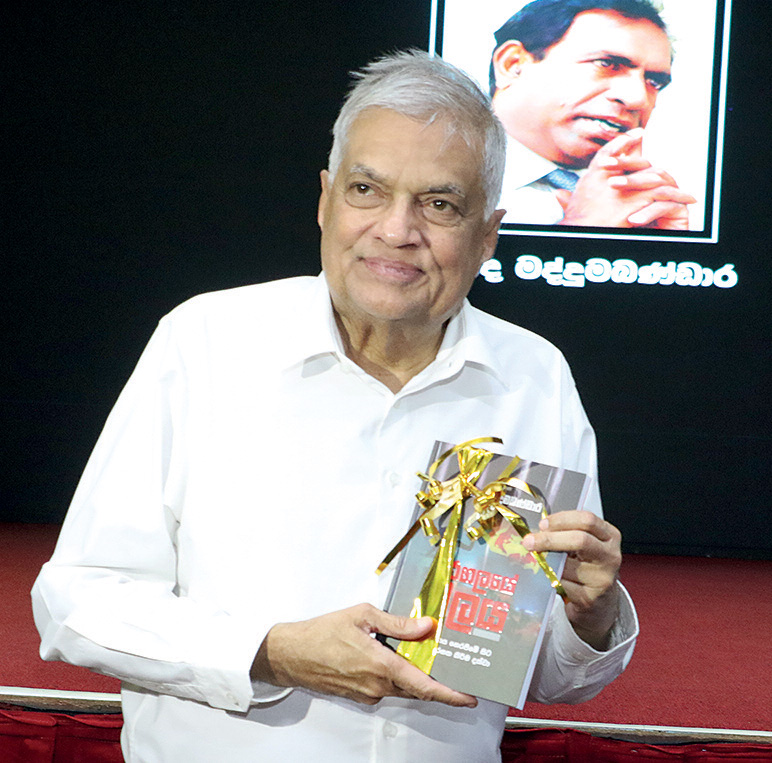
Ex-President Wickremesinghe with a copy of Aragalaye Balaya he received from its author, Prof. Professor Sunanda Maddumabandara, at the Sri Lanka Foundation recently (pic by Nishan S Priyantha)
On the basis of what Abeywardena had disclosed to him, Maddumabanadara also questioned the circumstances of the deployment of the elite Special Task Force (STF) contingent at the compound. The author asked whether that deployment, without the knowledge of the Speaker, took place with the intervention of Baglay.
Aragalaye Balaya
is a must read for those who are genuinely interested in knowing the unvarnished truth. Whatever the deficiencies and inadequacies on the part of the Gotabaya Rajapaksa administration, external powers had engineered a change of government. The writer discussed the issues that had been raised by Prof. Maddumabandara and, in response to one specific query, the author asserted that in spite of India offering support to Gotabaya Rajapaksa earlier to get Ranil Wickremesinghe elected as the President by Parliament to succeed him , the latter didn’t agree with the move. Then both the US and India agreed to bring in the Speaker as the Head of State, at least for an interim period.
If Speaker Abeywardena accepted the offer made by India, on behalf of those backing the dastardly US backed project, the country could have experienced far reaching changes and the last presidential election may not have been held in September, 2004.
After the conclusion of his extraordinary assignment in Colombo, Baglay received appointment as New Delhi’s HC in Canberra. Before Colombo, Baglay served in Indian missions in Ukraine, Russia, the United Kingdom, Nepal and Pakistan (as Deputy High Commissioner).
Baglay served in New Delhi, in the office of the Prime Minister of India, and in the Ministry of External Affairs as its spokesperson, and in various other positions related to India’s ties with her neighbours, Europe and multilateral organisations.
Wouldn’t it be interesting to examine who deceived Weerawansa and Thoradeniya who identified US Ambassador Chung as the secret visitor to the Speaker’s residence. Her high-profile role in support of the project throughout the period 31 March to end of July, 2022, obviously made her an attractive target but the fact remains it was Baglay who brought pressure on the then Speaker. Mahinda Yapa Abeywardena’s clarification has given a new twist to “Aragalaya’ and India’s diabolical role.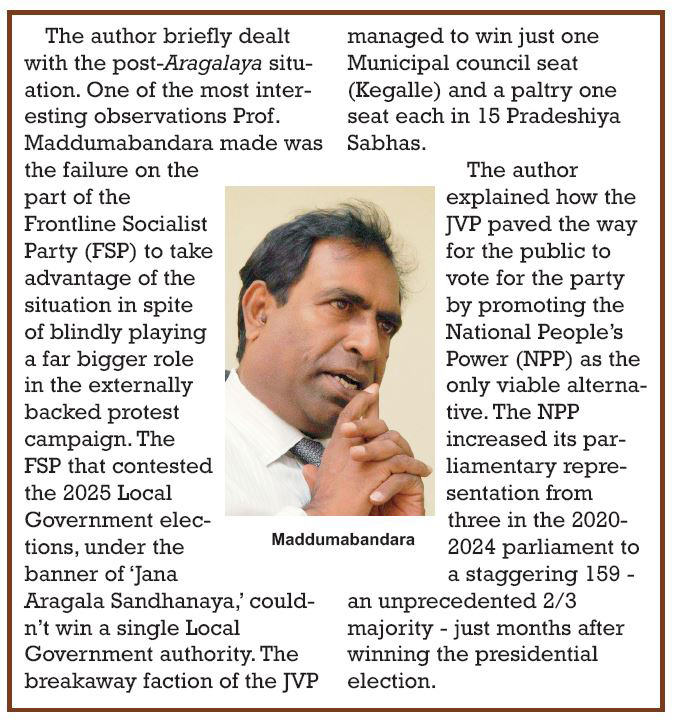
Absence of investigations
Sri Lanka never really wanted to probe the foreign backed political plot to seize power by extra-parliamentary means. Although some incidents had been investigated, the powers that be ensured that the overall project remained uninvestigated. In fact, Baglay’s name was never mentioned regarding the developments, directly or indirectly, linked to the devious political project. If not for Prof. Maddumabandara taking trouble to deal with the contentious issue of regime change, Baglay’s role may never have come to light. Ambassador Chung would have remained the target of all those who found fault with US interventions. Let me be clear, the revelation of Baglay’s clandestine meeting with the Speaker didn’t dilute the role played by the US in Gotabaya Rajapaksa’s removal.
If Prof. Maddumabandara propagated lies, both the author and Abeywardana should be appropriately dealt with. Aragalaye Balaya failed to receive the desired or anticipated public attention. Those who issue media statements at the drop of a hat conveniently refrained from commenting on the Indian role. Even Abeywardena remained silent though he could have at least set the record straight after Ambassador Chung was accused of secretly meeting the Speaker. Abeywardena could have leaked the information through media close to him. Gotabaya Rajapaksa and Ranil Wickremesinghe, too, could have done the same but all decided against revealing the truth.
A proper investigation should cover the period beginning with the declaration made by Gotabaya Rajapaksa’s government, in April 2022, regarding the unilateral decision to suspend debt repayment. But attention should be paid to the failure on the part of the government to decide against seeking assistance from the International Monetary Fund (IMF) to overcome the crisis. Those who pushed Gotabaya Rajapaksa to adopt, what they called, a domestic solution to the crisis created the environment for the ultimate collapse that paved the way for external interventions. Quite large and generous Indian assistance provided to Sri Lanka at that time should be examined against the backdrop of a larger frightening picture. In other words, India was literally running with the sheep while hunting with the hounds. Whatever the criticism directed at India over its role in regime change operation, prompt, massive and unprecedented post-Cyclone Ditwah assistance, provided by New Delhi, saved Sri Lanka. Rapid Indian response made a huge impact on Sri Lanka’s overall response after having failed to act on a specific 12 November weather alert.
It would be pertinent to mention that all governments, and the useless Parliament, never wanted the public to know the truth regarding regime change project. Prof. Maddumabandara discussed the role played by vital sections of the armed forces, lawyers and the media in the overall project that facilitated external operations to force Gotabaya Rajapaksa out of office. The author failed to question Wickremesinghe’s failure to launch a comprehensive investigation, with the backing of the SLPP, immediately after he received appointment as the President. There seems to be a tacit understanding between Wickremesinghe and the SLPP that elected him as the President not to initiate an investigation. Ideally, political parties represented in Parliament should have formed a Special Parliamentary Select Committee (PSC) to investigate the developments during 2019 to the end of 2022. Those who had moved court against the destruction of their property, during the May 2022 violence directed at the SLPP, quietly withdrew that case on the promise of a fresh comprehensive investigation. This assurance given by the Wickremesinghe government was meant to bring an end to the judicial process.
When the writer raised the need to investigate external interventions, the Human Rights Commission of Sri Lanka (HRCSL) sidestepped the issue. Shame on the so-called independent commission, which shows it is anything but independent.
Sumanthiran’s proposal
Since the eradication of the Liberation Tigers of Tamil Eelam (LTTE) in May 2009, the now defunct Tamil National Alliance’s (TNA) priority had been convincing successive governments to withdraw the armed forces/ substantially reduce their strength in the Northern and Eastern Provinces. The Illankai Thamil Arasu Kadchi (ITAK)-led TNA, as well as other Tamil political parties, Western powers, civil society, Tamil groups, based overseas, wanted the armed forces out of the N and E regions.
Abeywardena also revealed how the then ITAK lawmaker, M.A. Sumanthiran, during a tense meeting chaired by him, in Parliament, also on 13 July, 2022, proposed the withdrawal of the armed forces from the N and E for redeployment in Colombo. The author, without hesitation, alleged that the lawmaker was taking advantage of the situation to achieve their longstanding wish. The then Speaker also disclosed that Chief Opposition Whip Lakshman Kiriella and other party leaders leaving the meeting as soon as the armed forces reported the protesters smashing the first line of defence established to protect the Parliament. However, leaders of minority parties had remained unruffled as the situation continued to deteriorate and external powers stepped up efforts to get rid of both Gotabaya Rajapaksa and Ranil Wickremesinghe to pave the way for an administration loyal and subservient to them. Foreign powers seemed to have been convinced that Speaker Abeywardena was the best person to run the country, the way they wanted, or till the Aragalaya mob captured the House.
The Author referred to the role played by the media, including social media platforms, to promote Gotabaya Rajapaksa’s successor. Maddumamabandara referred to the Hindustan Times coverage to emphasise the despicable role played by a section of the media to manipulate the rapid developments that were taking place. The author also dealt with the role played by the Janatha Vimukthi Peramuna (JVP) in the project with the focus on how that party intensified its actions immediately after Gotabaya Rajapaksa stepped down.
Disputed assessment
The Author identified Ministers Bimal Rathnayaka, Sunil Handunetti and K.D. Lal Kantha as the persons who spearheaded the JVP bid to seize control of Parliament. Maddumabanda unflinchingly compared the operation, mounted against Gotabaya Rajapaksa, with the regime change operations carried out in Iraq, Libya, Egypt and Ukraine. Asserting that governments loyal to the US-led Western block had been installed in those countries, the author seemed to have wrongly assumed that external powers failed to succeed in Sri Lanka (pages 109 and 110). That assertion is utterly wrong. Perhaps, the author for some unexplained reasons accepted what took place here. Nothing can be further from the truth than the regime change operation failed (page 110) due to the actions of Gotabaya Rajapaksa, Mahinda Yapa Abeywardana and Ranil Wickremesinghe. In case, the author goes for a second print, he should seriously consider making appropriate corrections as the current dispensation pursues an agenda in consultation with the US and India.
The signing of seven Memorandums of Understanding (MoUs) with India, including one on defence, and growing political-defence-economic ties with the US, have underscored that the JVP-led National People’s Power (NPP) may not have been the first choice of the US-India combine but it is certainly acceptable to them now.
The bottom line is that a democratically elected President, and government, had been ousted through unconstitutional means and Sri Lanka meekly accepted that situation without protest. In retrospect, the political party system here has been subverted and changed to such an extent, irreparable damage has been caused to public confidence. External powers have proved that Sri Lanka can be influenced at every level, without exception, and the 2022 ‘Aragalaya’ is a case in point. The country is in such a pathetic state, political parties represented in Parliament and those waiting for an opportunity to enter the House somehow at any cost remain vulnerable to external designs and influence.
Cyclone Ditwah has worsened the situation. The country has been further weakened with no hope of early recovery. Although the death toll is much smaller compared to that of the 2004 tsunami, economic devastation is massive and possibly irreversible and irreparable.
By Shamindra Ferdinando
Features
Radiance among the Debris
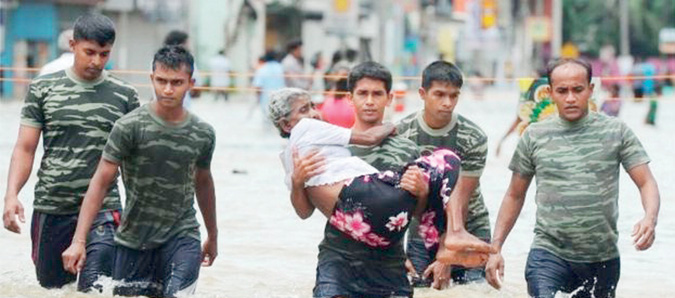
Over the desolate watery wastes,
Dulling the glow of the fabled Gem,
There opens a rainbow of opportunity,
For the peoples North and South,
To not only meet and greet,
But build a rock-solid bridge,
Of mutual help and solidarity,
As one undivided suffering flesh,
And we are moved to say urgently-
‘All you who wax so lyrically,
Of a united nation and reconciliation,
Grab this bridge-building opportunity.’
By Lynn Ockersz
-

 News4 days ago
News4 days agoOver 35,000 drug offenders nabbed in 36 days
-
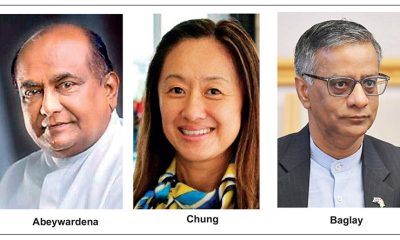
 Features2 days ago
Features2 days agoFinally, Mahinda Yapa sets the record straight
-
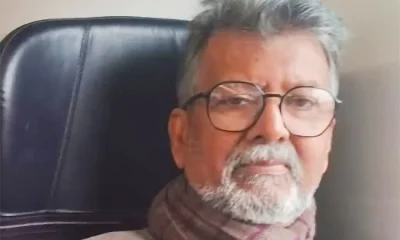
 News3 days ago
News3 days agoCyclone Ditwah leaves Sri Lanka’s biodiversity in ruins: Top scientist warns of unseen ecological disaster
-

 Business6 days ago
Business6 days agoLOLC Finance Factoring powers business growth
-

 News6 days ago
News6 days agoCPC delegation meets JVP for talks on disaster response
-
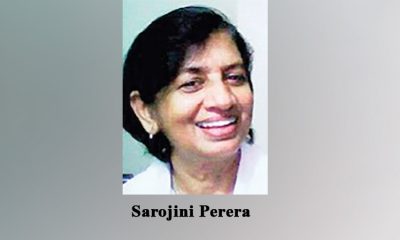
 News6 days ago
News6 days agoA 6th Year Accolade: The Eternal Opulence of My Fair Lady
-

 News4 days ago
News4 days agoRising water level in Malwathu Oya triggers alert in Thanthirimale
-
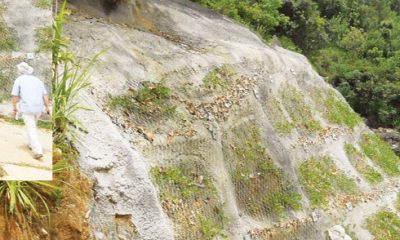
 Features5 days ago
Features5 days agoThe Catastrophic Impact of Tropical Cyclone Ditwah on Sri Lanka:

